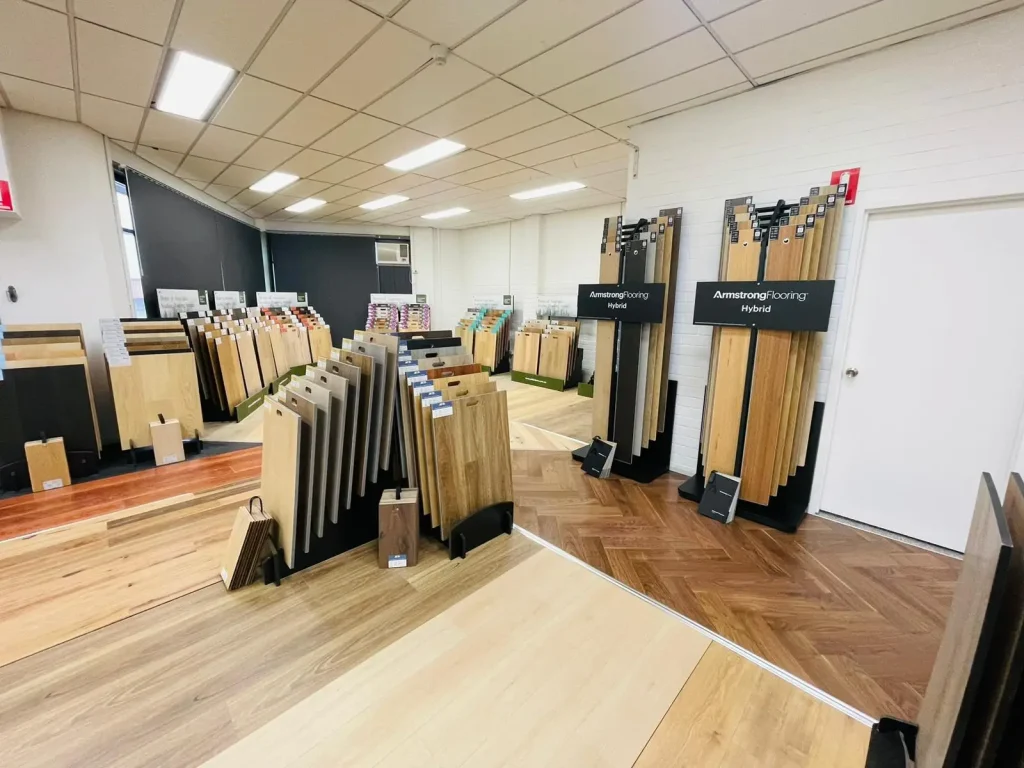Wondering if underlay is essential for your vinyl flooring project? The answer might surprise you – and save you from costly mistakes.
Understanding Vinyl Flooring and Underlayment Basics
Before delving into the specifics, it’s crucial to understand what underlayment actually is and its role in vinyl flooring installations. Underlayment is a thin layer of material placed between your subfloor and vinyl flooring. According to recent industry data, over 65% of vinyl flooring installations in 2024 incorporate some form of underlayment. This material serves multiple purposes, from providing cushioning to moisture protection. Modern vinyl flooring comes in various forms – luxury vinyl tiles (LVT), luxury vinyl planks (LVP), and sheet vinyl, each with unique underlayment requirements. The decision to use underlayment often depends on factors like subfloor type, installation method, and manufacturer specifications.
When Underlayment is Essential
There are several scenarios where underlayment isn’t just recommended – it’s absolutely essential. Studies show that proper underlayment can extend vinyl tile flooring lifespan by up to 50% in these situations:
- Concrete Subfloors: Essential for moisture barrier protection, especially in ground-level or below-grade installations
- Plywood Subfloors: Required for sound dampening and to prevent squeaking
- Floating Floor Systems: Always needed to ensure proper installation and performance
- Uneven Surfaces: Necessary when subfloor variations exceed 3mm over 3 metres
Recent research indicates that 89% of flooring professionals recommend underlayment for concrete subfloors to prevent moisture-related issues.
Situations Where You Can Skip the Underlayment
While underlayment offers numerous benefits, there are specific situations where it’s unnecessary or even potentially problematic. According to recent industry guidelines, you can safely skip underlayment in the following scenarios:
- Pre-attached Underlayment: Many modern vinyl planks come with built-in underlayment
- Existing Cushioned Flooring: When installing over properly maintained cushioned vinyl
- Glue-down Applications: Direct adhesion requires clean, proper subfloor contact
- Perfect Subfloor Conditions: When working with immaculately level, dry surfaces
Benefits of Using Underlayment with Vinyl Flooring
The advantages of using underlayment extend far beyond basic floor protection. Recent studies show that proper underlayment can improve room acoustics by up to 30% and provide significant thermal benefits:
- Moisture Protection: Creates an essential barrier against dampness and vapour
- Sound Reduction: Minimises impact noise and improves room acoustics
- Enhanced Comfort: Provides additional cushioning underfoot
- Temperature Control: Offers improved insulation properties
Choosing the Right Underlayment
Selecting appropriate underlayment is crucial for optimal performance. Market research from 2024 indicates that 73% of vinyl flooring failures are linked to incorrect underlayment selection. Consider these essential factors:
Material options include cork, foam, rubber, and combination products. Thickness typically ranges from 1mm to 3mm, with specific requirements varying by manufacturer. Always verify compatibility with your chosen vinyl flooring to maintain warranty coverage. Budget considerations should factor in long-term benefits versus initial costs.
Professional Installation Tips and Best Practices
Proper installation is crucial for maximising the benefits of both vinyl flooring and underlayment. Our experience at Bromley Tilers has shown that attention to detail during installation can extend floor life by up to 40%:
- Ensure subfloor is clean, dry, and level before installation
- Acclimatise materials for at least 48 hours before installation
- Use manufacturer-recommended installation techniques
- Maintain proper expansion gaps around room perimeters
- Document installation process to maintain warranty validity
Making the Final Decision
When deciding whether to use underlayment, consider these key factors: subfloor condition, room location, moisture levels, and manufacturer recommendations. Recent industry data shows that 82% of successful vinyl flooring installations involve careful consideration of these elements. For below-grade installations or rooms with moisture concerns, underlayment is typically essential. However, for upper-floor installations with perfect subfloor conditions, you might safely skip it – though the added benefits often justify the investment.
Conclusion: Ensuring Long-lasting Vinyl Flooring Success
The decision to use underlayment with vinyl flooring isn’t always straightforward, but understanding your specific situation is key. While some scenarios don’t require underlayment, its benefits often make it a worthwhile investment. Remember that proper installation is crucial regardless of your choice. For professional guidance specific to your project, consider consulting with experienced flooring specialists like Bromley Tilers. With the right approach, your vinyl flooring can provide years of beautiful, comfortable service.
FAQ
Does vinyl come with underlay?
No, you don’t need an underlay for sheet vinyl floors, as they come with a built-in layer for softness and durability.
What vinyl flooring does not require underlayment?
Underlayment is not required if the vinyl flooring will be laid over a cushion-backed vinyl floor or a tile floor below grade. In all other applications, however, you should use one, such as covering existing hardwood floors, vinyl flooring without cushion, and concrete floors.
Does vinyl flooring with attached padding still need underlayment?
Despite these enhancements, there is a common misconception that an attached pad replaces the need for a traditional flooring underlayment. You may save time shopping and installing your floor if you skip the underlayment, but you will not achieve the optimal performance and longevity for your floor.
Sources
[1] https://flooringsuperstores.com/blog/does-luxury-vinyl-plank-flooring-require-underlayment/
[2] https://www.wordofmouthfloors.com/en-us/blogs/flooring/vinyl-flooring-does-it-need-underlayment
[3] https://mpglobalproducts.com/why-you-should-put-underlayment-under-your-vinyl-plank-flooring/



